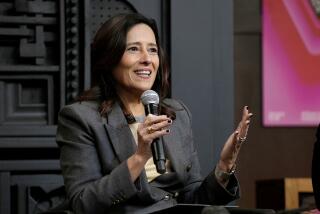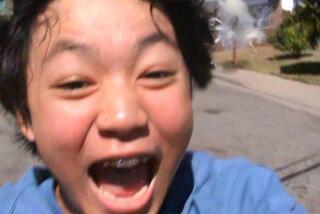Sundance 2015: No second-guessing with the films or winners this year
I believe in the Sundance Film Festival, and as with anything else I’m fond of, I feel the occasional need to second-guess it. But not this year.
True, this was a Sundance where some of the shuttle bus drivers were so new to town that I ended up standing next to one directions-challenged driver and telling him where to turn and where to stop. Only in Park City.
But if you judge festivals not by bus drivers but by the number of films that didn’t waste my time, Sundance 2015 did quite well, and the movies that succeeded with the various juries were all solid choices.
On the U.S. dramatic side, “Me and Earl and the Dying Girl,” the quirky story of a movie-crazy high school senior who befriends a young woman with leukemia, was the not-surprising winner of both the grand jury prize and the audience award.
In the U.S. documentary category, “The Wolfpack’s” compelling narrative of six movie-crazed brothers (is there a theme here?) trapped in a Manhattan apartment took the grand jury prize, and “Meru’s” heart-stopping story of a dangerous mountain climb won the audience award.
It was also nice to see world drama prizes going to two films I enjoyed, with India’s “Umrika” getting the audience nod and Alanté Kavaïté of Lithuania’s “The Summer of Sangaile” taking best director.
This was also the year when the Shari Frilot-curated virtual reality installations at the New Frontier section captured everyone’s imagination. The team of Felix & Paul inserted you so completely into the lifestyle of Mongolian herders that you could almost smell the yak butter, and Max Rheiner’s astonishing “Birdly” absolutely made you feel as if you were flying over the rooftops of San Francisco.
“It’s moving way faster than anyone expected,” Frilot said of the technology. “I thought what we’re seeing now would happen in 10 years.”
This was also the festival where I came away fascinated more than ever with how fine a line Sundance manages to walk, year in and year out, between being a wealthy, thriving event and catering to the huddled masses of tired, poor, striving filmmakers yearning to breathe free.
So even though festival promotions feature earnest pleas such as “you can support movies that no one expects and everyone will be talking about,” the signs of exceptional affluence are everywhere if you care to look.
Inside the festival program book, the tally of Sundance Institute supporters listed no fewer than eight foundations that gave $1 million or more in 2014 and a dozen others that gave more than $100,000 each.
Walking up and down Park City’s Main Street revealed major corporate sponsors such as Acura, HP, Grey Goose and Chase Sapphire commandeering space, and Southwest Airlines even nervily put its brand on the beloved Egyptian Theatre marquee. Lest locals get too disgruntled, a column in the Park Record reminded them that Sundance “contributes about $80 million each year to our state’s economy.”
Yet Sundance wouldn’t be Sundance without cultural pushback. A hand-lettered wooden sign nailed to a tree on that same Main Street, for instance, insisted that “we should know more about basic geography than we do about the personal lives of actors,” and an intrepid young filmmaker named Boonestacked a pile of fliers advertising his unproduced “heartfelt comedy” screenplay on the washstand of a portable toilet near one of the festival theaters.
Also pushing back were Sundance filmmakers such as “Tangerine” producer Mark Duplass, who said that “films like this do not get made in the studio system,” and “Dope” writer-director Rick Famuyiwa, who noted, “Everyone talks about the sales, the parties, but the best of it is being able to show stories that wouldn’t get shown.”
The way Sundance has traditionally kept its balance amid these competing forces has been a shrewd one. Though there are exceptions, the festival more or less de facto ensures that the films competing for its most coveted award, the U.S. dramatic competition’s grand jury prize, are new voices that cannot be accused of selling out to the forces of commercialism.
Which means that filmmakers with experience and/or broader appeal are often consigned to the Premiers section. Once a destination for vanity projects by stars with indie wanderlust, Premiers had some of the festival’s most interesting films this year, including John Crowley’s remarkable “Brooklyn” (acquired by Fox Searchlight after a spirited bidding war) and Michael Almereyda’s elegant “Experimenter.”
Among the other Premiers worthy of note:
“The End of the Tour.” A thoughtful look at what happens when novelists and journalists cross paths, it stars Jason Segel as writer David Foster Wallace and Jesse Eisenberg as Rolling Stone reporter David Lipsky.
“Last Days in the Desert.” Ewan McGregor stars as both Jesus and a demon who taunts him during his time in the desert in this Rodrigo García-directed fable, which provides yet another showcase for the brilliant cinematography of Emmanuel Lubezki.
“Zipper.” Director Mora Stephens has constructed a moral drama paced like a thriller as a rising politician expertly played by Patrick Wilson contends with a sexual compulsion that threatens his marriage and his career.
Although some of these films will go on to bigger lives, all of them are underdogs in today’s harsh exhibition environment, and all of them could use the boost that winning the competition’s grand jury prize would give them. Just as professional basketball players are now allowed to compete for Olympic medals, why couldn’t these more polished films contend for Sundance’s main event? If I hadn’t sworn off second-guessing the festival this year, that’s a question I might have asked.
More to Read
Only good movies
Get the Indie Focus newsletter, Mark Olsen's weekly guide to the world of cinema.
You may occasionally receive promotional content from the Los Angeles Times.







